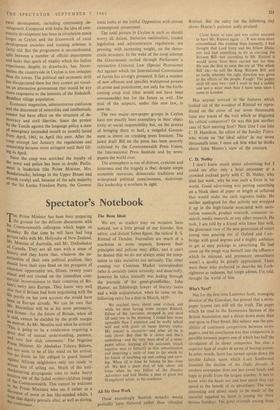Who's Next?
Not for the first time Laurence Scott, managing director of the Guardian, has proved that a news- paper tycoon can still tell the truth. The paper which he read to the Economics Section of the British Association sent a shiver down more than one spine in Fleet Street. His subject was the pos- sibility of continued competition between news- papers, and his conclusion was that competition is possible between papers one of which has half the circulation of its direct competitor but also a superior type of reader in terms of buying-power. In other words, Scott has turned upside down the
terrible fallacy upon which Lord Southwood founded the decline of the Daily Herald. A
modern newspaper does not just count heads and hope to profit from the largest number. It has to know who the heads are and how much they can spend to the benefit of its advertisers. The most interesting and direct study to be made of the material supplied by Scott is among the three serious Sundays. The great triumph among them
on the side of editorial novelty—keeping it all within twenty-eight pages or so—has been the Sunday Telegraph but is it true that this editorially successful paper is still a financial bur- den to its daily partner? Is it true that the Ob- server is finding it hard to make its loose ends meet? Is it true that in spite of heavy losses originally on its colour section the Sunday Times is now making real profits from an enter- prise which everybody who knew the first thing about Sunday newspaper production condemned to death without a trial? Roy Thomson said not long ago that the colour section would break even in about November, but his accountants already believe it to be responsible for a sub- stantial increase in the circulation of the paper as a whole, which has made it possible to put up the advertising rates. Who will be next for colour? The Guardian?



































 Previous page
Previous page